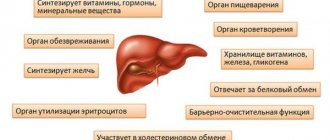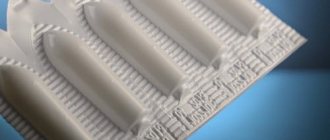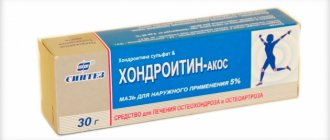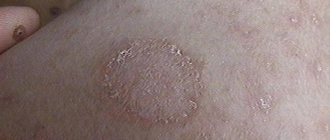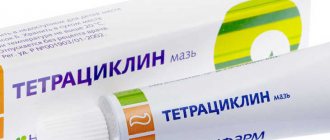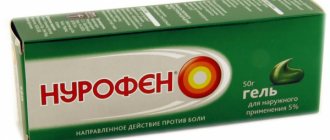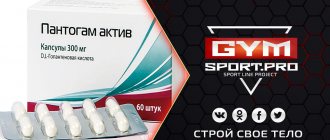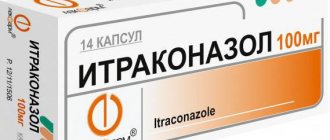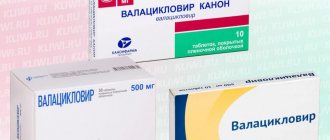Composition and release forms
Belosalik is a combination drug. It contains two ingredients that provide therapeutic activity:
- Betamethasone.
- Salicylic acid.
It is produced by the pharmaceutical industry in the form of ointment and lotion (spray). Depending on this, the preparations contain a number of excipients. The ointment base is created by soft paraffin and mineral oil, and the solution is formed by water, sodium hydroxide, hypromellose, disodium edetate, and isopropanol.
Hormonal or not?
Betamethasone is a synthetic fluorinated glucocorticoid. That is, it is an analogue of natural hormones of the adrenal cortex. Consequently, Belosalik also has the corresponding activity, and therefore should be prescribed exclusively by a doctor. Hormonal drugs require special attention and a careful assessment of the likely risks.
Therapeutic effect
The ointment has antiallergic and antimicrobial activity. Betamethosone is a synthetic analogue of steroid hormones that effectively reduces inflammation, itching and swelling of tissues. The substance reduces pain and irritation, constricts blood vessels. Salicylic acid has a softening and exfoliating effect. After applying the ointment, the skin is cleared of the stratum corneum, and betamethasone penetrates better into the deep layers of the epidermis. The components prevent the development and spread of fungal and bacterial infections.
How do the ointment and spray work?
The effects of the drug are due to the properties of its individual ingredients. The main role is played by betamethasone, the action of which is determined by cellular and biochemical changes that manifest therapeutic effects:
- Anti-inflammatory.
- Antiallergic.
- Antiproliferative.
- Antipruritic.
- Vasoconstrictor.
It stimulates the formation of lipocortin, which inhibits the activity of phospholipase, which leads to inhibition of the synthesis of prostaglandins, leukotrienes, and endoperoxides. Betamethasone stabilizes the membranes of mast cells and basophils, reduces the production of cytokines (interleukins, interferon).
Salicylic acid complements the effects of Belosalik with keratolytic properties, clearing the skin of horny scales and promoting better penetration of the corticosteroid. By maintaining an acidic environment and antiseptic properties, it protects the epithelium from bacterial and fungal infections.
Belosalik is a complex preparation of betamethasone and salicylic acid, which has a versatile effect on the affected skin.
What does the drug help with?
The drug is used to treat dermatoses sensitive to hormonal therapy. The list of indications includes conditions of an inflammatory-allergic nature, accompanied by symptoms of hyperkeratosis and lichenification:
- Psoriasis.
- Lichen planus.
- Seborrheic dermatitis.
- Atopic dermatitis.
- Dry eczema.
- Ichthyosis.
The drug is used for diseases in the subacute and chronic stages of development. It is not used to treat acne on the face (acne, rosacea), as it can have the exact opposite result.
Indications for use
According to the instructions, Belosalik lotion is indicated for use in chronic and subacute dermatoses, sensitive to corticosteroid therapy, accompanied by peeling and hyperkeratosis:
- seborrhea, seborrheic dermatitis of the scalp;
- simple and allergic dermatitis;
- atopic dermatitis;
- psoriasis;
- limited prurigo with severe lichenification;
- diffuse neurodermatitis;
- limited neurodermatitis (simple chronic lichen);
- lichen asbestos, lichen planus;
- dermatoses that cannot be treated with other corticosteroids (including verrucous verrucous);
- eczema (especially chronic);
- exudative erythema multiforme;
- skin dyshidrosis;
- ichthyosis.
Absolute:
- bacterial, fungal and viral skin infections (including syphilis, pyoderma, skin tuberculosis, herpes, chicken pox, sporotrichosis, blastomycosis, actinomycosis);
- perioral dermatitis;
- post-vaccination skin reactions;
- rosacea;
- skin tumors (nevus, skin cancer, atheroma, melanoma, epithelioma, sarcoma, xanthoma, hemangioma);
- trophic ulcers against the background of CVI (chronic venous insufficiency);
- pregnancy and lactation period;
- children under 1 year of age;
- increased individual sensitivity to betamethasone, salicylic acid or any of the auxiliary components of the drug.
The use of Belosalik lotion in patients with impaired liver function, in children (over 6 months), as well as long-term treatment with the drug, especially with the use of occlusive dressings, requires caution.
... Belosalik ointment:
- psoriasis (read more about psoriasis)
- eczema
- ichthyosis
- atopic dermatitis
- limited prurigo with severe lichenification (that is, thickening of the skin in this area)
- diffuse neurodermatitis
- lichen planus
- allergic dermatitis
- hives
- simple chronic lichen (limited neurodermatitis)
- dermatoses that cannot be treated with other hormonal drugs (especially verrucous verrucous)
... Belosalik lotion
- psoriasis of the scalp
- seborrheic dermatitis of the scalp
- lichen asbestos
- lichen planus localized to the scalp
- seborrhea (dandruff)
- neurodermatitis
- eczema
- ichthyosis
- Pustular, viral and fungal skin diseases: acne, warts, papillomas, chickenpox, molluscum contagiosum, skin tuberculosis, fungus, etc.
- Dermatitis around the mouth
- Rosacea
- Malignant neoplasms
- Trophic ulcers on the skin
- Pregnancy and lactation
- Children under 1 year
Belosalik, ointment and lotion, instructions for use suggest use for any non-infectious inflammatory diseases of the epidermis, accompanied by itching, peeling, swelling and redness.
Belosalik lotion and ointment have the following indications for use:
- Psoriasis;
- Eczema;
- Seborrheic dermatitis;
- Dry eczema.
For weeping eczema, the drug is not advisable to use due to the presence of salicylic acid in the composition, which helps exfoliate keratinized particles of the epidermis. For weeping eczema, it is better to choose a product without salicylic acid.
The drug Belosalik can be prescribed by a dermatologist for the treatment of any inflammatory skin disease, in case of ineffectiveness of non-hormonal drugs. Belosalik is a hormonal ointment, but there is nothing dangerous in this if the drug is used as prescribed by a doctor and strictly according to the instructions.
The drug is unsafe and has a wide list of contraindications. First of all, it is necessary to exclude intolerance to the main active ingredients, since the medicine can provoke an allergic reaction. If a person previously had intolerance to betamethasone or salicylic acid, the drug should not be used.
Like other corticosteroids, the medicine should not be used for infectious or bacterial inflammation of the epidermis due to the risk of superinfection.
The medicine is not used to treat:
- Acne vulgaris or acne;
- Generalized plaque psoriasis;
- Itching and rash in the anus and genital area;
- Bacterial skin lesions;
- Varicose veins;
- Trophic ulcers.
The drug is not used in the treatment of syphilis, skin tuberculosis, chickenpox and herpes zoster caused by infection with the herpes virus. In these cases, antibacterial and antiviral drugs are necessary.
Belosalik cannot be used in ophthalmic practice. If the medicine gets into your eyes, rinse them immediately with water. If redness and severe burning are observed, you should consult a doctor. This precaution is due to the salicylic acid in the composition, which can damage the cornea of the eye.
The use of Belosalik on the face should be limited to 4-5 days. Salicylic acid, when used for a long time, can cause scarring on thin and sensitive skin.
Before using the medicine while expecting a child, it is recommended to consult a doctor. During the period of treatment of psoriasis with the drug "Belosalik", breastfeeding should be abandoned. It is recommended to refrain from using the medicine if you have the following contraindications:
- Syphilis;
- The presence of open wounds on the body;
- Smallpox;
- The presence of trophic ulcers on the body;
- Blastomycosis;
- Skin damage due to tuberculosis.
Syphilis Smallpox Blastomycosis Skin tuberculosis
Belosalik is not prescribed to infants (under six months).
It is forbidden to use the ointment in the 1st trimester of pregnancy - a negative effect on the fetus is possible. It is not recommended to use the product in the 2nd and 3rd trimesters, however, according to strict indications, short courses or one-time applications of Belosalik can be practiced under the supervision of a doctor. During lactation, if there is an urgent need for therapy, it is better to stop breastfeeding for a while.
Other contraindications include:
- cutaneous forms of tuberculosis;
- wounds, especially bleeding ones, at the site of application;
- syphilis;
- mycoses of the skin, mucous membranes;
- serious bacterial diseases, especially those caused by pyogenic bacteria;
- herpes;
- rosacea;
- ulcers on the limbs;
- dermatitis of the lips;
- cancerous, precancerous skin diseases.
Usually, with correct, dosed application, observing contraindications, “side effects” appear very rarely or are mild. But with hypersensitivity, intolerance to components, redness, itching, burning, rash, skin hyperthermia and other local reactions may occur. Long-term treatment can cause hypopigmentation, skin atrophy and the appearance of stretch marks and spider veins. Individuals with weakened immune systems may develop a secondary bacterial infection.
Instructions for use
Belosalik is intended for topical use, by applying to the skin, including the scalp (for lotion). In this case, it is necessary to avoid getting the drug into the eyes, mucous membranes, wound surfaces and ulcers. The ointment is applied in a thin layer to the affected areas 2 times a day. The liquid form is sprayed onto the scalp, sometimes a single application is sufficient.
The duration of therapy is determined by the nature of the underlying disease, but in most cases it is 3–4 weeks. When using an ointment or spray in children, the course of treatment is limited to 5 days. After the symptoms disappear, it is recommended to reduce the frequency of use of the drug, applying it every other day, trying to achieve the minimum effective dosage. In any case, you cannot do without consulting a specialist.
Belosalik ointment
Hormonal combination anti-inflammatory drug. Application: psoriasis, lichen, neurodermatitis. Price from 436 rub.
Analogs: Betasalik, Akriderm SK. You can find out more about analogues, their prices, and whether they are substitutes at the end of this article.
Today we’ll talk about Belosalik ointment. What is this product and how does it affect the body? What are the indications and contraindications? How and in what doses is it used? What can be replaced?
What kind of ointment
In the treatment of dermatological diseases with an active inflammatory process, accompanied by hyperkeratosis, the drug Belosalik ointment is used. Instructions for use of this combined product contain information on dosage and method of use, indications for use and some features of use.
The ointment is white, almost transparent, odorless.
Belosalik is also produced in the form of a solution for external use.
The composition of Belosalik is important for patients, especially whether the active component is hormonal or not. One of the active ingredients of the ointment is a synthetic analogue of the hormone produced by the adrenal cortex - betamethasone dipropionate.
Active ingredient and composition
Belosalik contains two active substances - the glucocorticosteroid hormone (synthetic analogue) betamethasone in the form of dipropionate and the dermatotropic substance salicylic acid.
The solution for external use contains the same active ingredients as the ointment form.
10 g of ointment contains 6.4 mg of betamethasone dipropionate and 300 mg of salicylic acid. The remaining substances (fat base) in the composition of Belosalik ointment are liquid and white soft paraffin.
In 10 ml of solution there are 6.4 mg of betamethasone dipropionate and 200 mg of salicylic acid.
Pharmacological properties
The drug has a multifaceted effect on the body:
- anti-inflammatory;
- antiproliferative;
- antiallergic;
- antiexudative;
- local vasoconstrictor;
- keratolytic;
- antipruritic;
- decongestant;
- fungistatic;
- bacteriostatic.
Pharmacodynamics and pharmacokinetics
The absorption of the drug depends on the condition of the skin, the age of the patient, the use of occlusion, duration of use, and the size of the lesion.
In the presence of an inflammatory process on the skin, a violation of its integrity, or the use of a sealed dressing, systemic absorption increases and can reach 15%.
The degree of adsorption linearly depends on the patient’s age - the younger the patient, the higher it is.
Betamethasone binds to albumin, is metabolized in the liver, and excreted by the kidneys. A small part of the metabolites is excreted in the bile.
Betamethasone penetrates the blood-brain and placental barriers and is excreted into breast milk. Has a toxic effect on the fetus.
Salicylic acid accumulates in the stratum corneum of the epidermis, creating therapeutic concentrations. The substance helps cleanse wounds of pus, creates an acidic environment on the surface of the skin, thereby blocking the growth of bacterial and fungal flora.
Salicylic acid inhibits the activity of the sweat and sebaceous glands, has a local distracting, wound-healing and antiseptic effect.
Produces keratolytic and keratoplastic effects. Softens the stratum corneum of the epidermis, facilitating deeper and more complete penetration of betamethasone.
The maximum concentration of the substance is observed 6-10 hours after application, when using occlusion - after 5 hours.
Betamethasone is a vasoconstrictor, blocks the synthesis, movement and release of inflammatory and allergic mediators, relieving itching and inflammation.
Prevents exudation, eliminating inflammatory swelling.
Directions for use and dosage
The treatment regimen is prescribed by the doctor. Belosalik cream is used only on open areas of the skin. The product is applied to the skin twice a day.
The duration of treatment should not exceed 4 weeks. The average course of treatment lasts 10-14 days.
Apply to facial skin only for adults, for a course of no longer than 5 days.
The solution for external use is applied to the scalp. The regimen and duration of therapy is determined by the doctor.
In childhood, during pregnancy and pregnancy
Children from birth to 6 months are not prescribed Belosalik. The course of treatment for children under 14 years of age is 5 days, the frequency of applications is once a day.
During pregnancy, avoid using Belosalik in the first trimester. For serious indications, it is prescribed at a later date.
Breastfeeding should be interrupted during treatment.
Side effects
Negative reactions are quite rare, are reversible and do not cause much harm to the health and well-being of patients.
Side effects develop at the site of application of the ointment. The most common symptoms are itching, redness, burning, and tingling.
Possible changes in skin color, discoloration or darkening, steroid acne, secondary infection, hair loss or increased growth, thinning of the skin and subcutaneous tissue.
Occlusive dressings, application of ointment to large areas of the body, long-term use, especially in children, can cause the development of systemic side effects. They manifest themselves in the form of damage to the central nervous system, hypofunction of the adrenal glands and pituitary gland.
When the ointment is discontinued, the side effects go away on their own.
If necessary, symptomatic treatment is prescribed.
Overdose
Unlikely if the instructions for use are followed. Manifests itself as a side effect of the drug. Does not require special treatment.
Measures are taken to accelerate the removal of the substance from the body and restore electrolyte balance.
The withdrawal of drugs is gradual.
Interesting video: Belosalik spray for psoriasis
Source: https://mazikrem.ru/belosalik/
Analogs
Often there is a need to search for analogues, especially when the drug is not in the pharmacy, individual hypersensitivity has developed to it, or the high cost is not satisfactory. Substitutes for Belosalik can be:
- Diprosalik.
- Dermabin.
- Betasalik.
- Betadermic.
- Betnovate-S.
Akriderm SK ointment is very popular - it is cheaper, contains slightly more betamethasone, but is not available in lotion. No combination with salicylic acid in the form of a cream has been registered, but there are monocomponent products with only one corticosteroid.
The choice of analogues on the drug market is quite wide, therefore, after consulting with your doctor, you can always choose the right one.
Use of the drug in pediatric practice
During pregnancy, Belosalik can be used for a short course only on small areas of the skin, and only if the doctor decides that the benefits for the woman when treated with a hormonal drug outweigh the risks of fetal development. During breastfeeding, applying ointment to the skin of the mammary glands is prohibited.
Children are allowed to use Belosalik ointment from infancy under the strict supervision of a pediatrician and only for short courses. In a fragile body, there is a risk of systemic absorption of active substances due to the predominance of skin over body weight.
The use of this ointment in the first trimester is contraindicated, since it is unknown how safely the main components of the drug affect the intrauterine development of the fetus.
The use of Belosalik ointment in the 2nd and 3rd trimesters of pregnancy is not recommended. If there is an urgent need for drug therapy, the doctor must assess the possible risks to the fetus and the potential benefits for the expectant mother. Treatment in this case is carried out under the supervision of a specialist.
The use of the drug during breastfeeding is not recommended, since the active ingredients of the drug can pass into breast milk and then into the baby’s body. If treatment with the drug is necessary, the issue of stopping lactation should be decided.
The use of Belosalik ointment in children over 1 year of age should be carried out with caution under the strict supervision of a physician. In young children, there is a high risk of systemic absorption of the drug due to the immaturity of the epidermis and low body weight, so therapy should be carried out as soon as possible and with a minimum amount of medication.
The use of Belosalik lotion in pregnant women is allowed only in cases where the expected benefit to the mother is higher than the probable risk to the fetus. In this case, the drug should be used for a short time and applied to small areas of the skin.
During breastfeeding, the lotion can be used only according to strict indications. However, you should not apply the drug to the skin of the mammary glands before feeding.
The average duration of the treatment course is three weeks. “Belosalik” is applied to the affected area of the body with smooth movements. Frequency of use: three times a day. Positive changes are noticeable already in the first days of using the medication. The salicylic acid present in it helps eliminate itching and activates the process of penetration of betamethasone into the affected area.
Side effects
During Belosalik therapy, side effects are likely, mainly caused by betamethasone, but all of them are temporary and mild. When treating with ointment or lotion, you can expect the following phenomena:
- Irritation (itching, burning, redness).
- Dryness and flaking.
- Contact dermatitis.
- Acneiform rashes.
- Pigmentation disorder.
- Atrophic changes, stretch marks.
- Attachment of a secondary infection.
Due to a decrease in the protective properties of the skin, topical steroids can provoke an exacerbation of psoriasis and the development of pustular forms. When applied to large areas of skin or under occlusive dressings, or exceeding the recommended duration of treatment, especially in children, there is a risk of developing systemic effects characteristic of corticosteroids and salicylates.
Drug interactions
Pharmacodynamics
The pharmacological action of Belosalik lotion is determined by the active components included in its composition. The drug has anti-inflammatory, antipruritic, decongestant, antiallergic, antiproliferative, immunosuppressive, keratolytic, vasoconstrictor, antifungal, antimicrobial and local hypothermic effects.
The active substance of the drug, betamethasone, belongs to synthetic glucocorticosteroids (GCS) for external use. When betamethasone is applied to the surface of the skin, itching, irritation, pain are reduced, and skin blood vessels constrict. Under the influence of the active substance, the process of release of inflammatory mediators (from mast cells and eosinophils), interleukins 1 and 2, interferon gamma (from macrophages and lymphocytes) is suppressed, the activity of hyaluronidase is reduced and the degree of permeability of the vascular wall is reduced.
Betamethasone interacts with specific receptors in the cell cytoplasm, promotes the synthesis of mRNA (matrix ribonucleic acid), which induces the formation of lipocortin and other proteins. Lipocortin suppresses phospholipase A2, is involved in blocking the release of arachidonic acid and suppressing the biosynthesis of prostaglandins, leukotrienes, endoperoxides, which contribute to the development of allergies, inflammation and other pathological processes.
Salicylic acid, due to its keratolytic effect, softens the skin, cleanses the affected areas of horny deposits, promotes the penetration of corticosteroids deep into the skin, and also prevents the development of fungal and bacterial infections, maintaining an acidic environment in the affected area of the skin.
Pharmacokinetics
There is no information on the pharmacokinetics of the drug.
When using Belosalik lotion, adverse reactions, as a rule, are mild and reversible.
On the part of the skin, hypersensitivity reactions (burning or redness, itching), hypopigmentation, acne-like changes, secondary skin infections, hypertrichosis, skin atrophy, stretch marks may be observed.
In cases of uncontrolled long-term and continuous use of the drug and application to large areas of the skin, telangiectasia may occur, as well as systemic manifestations of side effects of GCS and salicylates.
If a hypersensitivity reaction and/or side effects develop, the drug should be discontinued and consult a specialist.
There are no clinically proven interactions between the active components of the drug and other drugs.
Simultaneous use with dermatological and cosmetic products for external use containing ethanol, or with medical soap with a pronounced drying effect can lead to skin irritation.
Betamethasone is a hormone of the adrenal cortex that slows down the intensity of itching and pain, reduces capillary permeability, and relieves swelling and inflammation of the skin. Salicylic acid improves the penetration of betamethasone, prevents the occurrence of infection or fungus at the site of inflammation by creating an acidic environment, reduces the pathology of tissue keratinization, and enhances the processes of exfoliation of the epidermis. Mineral oil and petroleum jelly are auxiliary components that prevent the sweating of moisture, forming a protective film on the skin.
Reviews from doctors about the drug convince us that it has very few side effects. They can occur with an overdose of Belosalik, especially in children with extensive skin lesions, as well as with prolonged use of the ointment under an occlusive dressing. Rapid absorption of the steroid component can lead to side effects: hypercortisolism, adrenal insufficiency.
As for contraindications, Belosalik ointment should not be prescribed for use on open wounds, with skin tuberculosis, manifestations of syphilis, trophic ulcers, during chickenpox and rosacea. The drug is not used if the patient is hypersensitive to the ointment substances. Belosalik is also not prescribed for viral infections or after skin reactions to vaccination.
Belosalik ointment is for external use only. The drug is a combination drug that combines anti-inflammatory and antiallergic effects.
The main active ingredient of the drug, betamethasone, belongs to the group of glucocorticosteroids and has an anti-inflammatory effect on the affected areas of the skin, relieves itching and swelling, and reduces the amount of pathological exudate. Salicylic acid, which is part of the drug, has a pronounced antiseptic effect, due to which the growth and reproduction of pathogenic microflora is inhibited.
There are no data on drug interactions with Belosalik other drugs, however, the simultaneous use of ointment with glucocorticosteroids orally or by injection in a patient increases the risk of developing systemic side effects.
When using the ointment simultaneously with salicylic acid-based antiseptics, the risk of developing irritation and excessive dryness of the skin increases.
Salicylic acid is a well-known agent with a powerful keratolytic effect. It softens keratinized areas of the epidermis, reduces the inflammatory reaction, accelerates the process of exfoliation of the epidermis and its renewal. Promotes tissue regeneration, reduces irritation and softens rough areas of the skin.
Betamethasone is a synthetic analogue of hormones secreted by the adrenal glands. Its action is aimed at eliminating inflammatory and allergic reactions in the upper layers of the epidermis. This drug has a pronounced anti-inflammatory effect. The main feature is the rapid elimination of itching and swelling of the skin in psoriasis and other inflammatory diseases, which makes Belosalik one of the most popular medicines.
"Belosalik" penetrates deep into the epidermis. The drug helps normalize metabolism at the cellular level. Due to the salicylic acid present in the drug, Belosalik has a disinfecting effect, neutralizing the activity of pathogenic microorganisms.
The medication moisturizes the skin and activates the lymphatic system. “Belosalik” activates the process of tissue restoration and allows you to eliminate traces of previously existing psoriatic plaques on the skin.
The medication is effective not only for psoriasis, but also for the following diseases:
- Eczema;
- Neurodermatitis;
- Dermatosis occurring in acute form;
- The patient has seborrheic dermatitis.
Contraindications
Belosalik cannot be used in situations where the patient has an individual intolerance to one of the components of the drug. Other contraindications noted in the instructions are:
- Vulgar acne.
- Rosacea (rosacea).
- Perioral and diaper dermatitis.
- Genital, perianal itching.
- Bacterial and fungal infections (including tuberculosis, syphilis).
- Viral infections (herpes, chicken pox, shingles).
When using Belosalik, you should not take salicylic acid preparations or other non-steroidal anti-inflammatory drugs. Ointment and lotion do not combine with benzoyl peroxide and retinoids.
Belosalik (ointment)
Ointment for external use
Compound
1 g of the drug contains
active ingredients: betamethasone dipropionate 0.640 mg (equivalent to 0.500 mg betamethasone), salicylic acid 30.0 mg.
excipients: liquid paraffin, white soft paraffin
Description
White translucent homogeneous ointment
Pharmacotherapeutic group
Glucocorticosteroids for local treatment of skin diseases. Glucocorticosteroids in combination with other drugs. Corticosteroids are strong in combination with other drugs. Betamethasone in combination with other drugs.
ATX code D07ХС01.
Indications for use
– inflammatory dermatoses, sensitive to local corticosteroid therapy and salicylic acid, accompanied by hyperkeratosis and peeling
– psoriasis of the scalp
– chronic plaque psoriasis on the skin of the hands and feet
Side effects
The drug is generally well tolerated and side effects are rare and reversible:
– burning, itching, irritation, dryness, folliculitis, hypertrichosis, acne, hypopigmentation, hyperpigmentation or depigmentation of the skin, hair depigmentation, perioral dermatitis and allergic contact dermatitis.
Prolonged use without interruption can lead to local skin atrophy, stretch marks and superficial vascular dilatation, especially on the face.
When using occlusive dressings, the following symptoms most often develop: skin maceration, secondary infection, skin atrophy, stretch marks and miliaria.
In addition, long-term use of salicylic acid preparations can cause dermatitis.
Drug interactions
There are no clinically significant interactions with other drugs.
Release form and packaging
Ointment for external use.
30 g of the drug in an aluminum tube with a membrane, with an internal varnish coating, closed with a polyethylene cap with a pin for piercing the membrane.
1 tube, along with instructions for use in the state and Russian languages, is placed in a cardboard pack.
Storage conditions
Store at a temperature not exceeding 25 oC.
Keep out of the reach of children!
Shelf life
4 years
Do not use the drug after the expiration date.
Manufacturer
BELUPO, medicines and cosmetics d.d., Republic of Croatia, 48000, Koprivnica, st. Danitsa, 5.
Registration Certificate Holder
BELUPO, medicines and cosmetics d.d., Republic of Croatia
Address of the organization that accepts consumer complaints regarding product (product) quality on the territory of the Republic of Kazakhstan:
Representative office in the Republic of Kazakhstan
Almaty, st. Zheltoksan, 87, office 24, 25, 26.
Tel.;
Fax
Source: https://drugs.medelement.com/drug/%D0%B1%D0%B5%D0%BB%D0%BE%D1%81%D0%B0%D0%BB%D0%B8%D0%BA -%D0%BC%D0%B0%D0%B7%D1%8C-%D0%B8%D0%BD%D1%81%D1%82%D1%80%D1%83%D0%BA%D1%86 %D0%B8%D1%8F/966717961477650944?instruction_lang=RU

